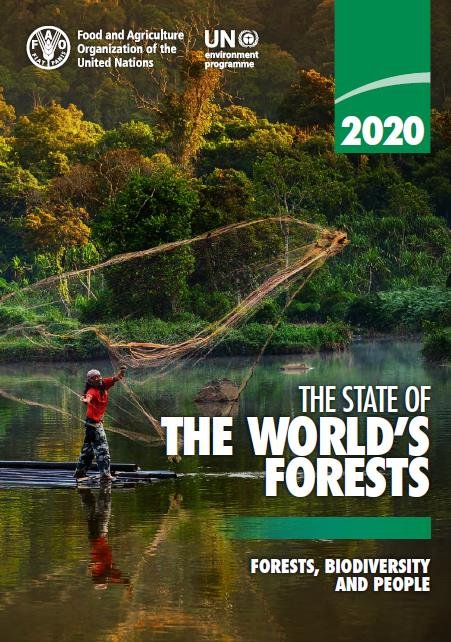 Read this article in French
Read this article in French- Share this article
- Subscribe to our newsletter
The State of the World's Forests 2020
Urgent action is needed to safeguard the biodiversity of the world's forests amid alarming rates of deforestation and degradation, according to this year’s edition of the report The State of the World's Forests.
The report was published by the Food and Agriculture Organization of the United Nations (FAO) in late May 2020. For the first time it was produced in partnership with the United Nations Environment Programme (UNEP), and technical input from the UN Environment Programme World Conservation Monitoring Centre (UNEP-WCMC).
The report presents a comprehensive overview of forest biodiversity, including world maps revealing where forests still hold rich communities of fauna and flora, such as the northern Andes and parts of the Congo Basin, and where they have been lost.
People's health is linked to ecosystem health
The COVID-19 crisis has thrown into sharp focus the importance of conserving and sustainably using nature, recognising that people's health is linked to ecosystem health.
Protecting forests is key to this, as they harbour most of the Earth's terrestrial biodiversity. This report shows that forests contain 60,000 different tree species, 80 percent of amphibian species, 75 percent of bird species, and 68 percent of the Earth's mammal species.
FAO's Global Forest Resources Assessment 2020, noted in the report, found that despite a slowing of the rate of deforestation in the last decade, some 10 million hectares are still being lost each year through conversion to agriculture and other land uses.
Reconnect forest fragments
In this report, a special study from the Joint Research Centre of the European Commission and the US Forest Service found 34.8 million patches of forests in the world, ranging in size from 1 hectare to 680 million hectares. Greater restoration efforts to reconnect forest fragments are urgently needed.
The report notes that the Aichi Biodiversity Target to protect at least 17 per cent of the Earth's terrestrial areas by 2020 has been achieved for forests, although progress is still required to ensure the representativeness and effectiveness of such protection.
A study conducted by UNEP-WCMC for this report shows that the largest increase in protected forest areas occurred in broadleaved evergreen forests - such as those typically found in the tropics. Furthermore, over 30 per cent of all tropical rainforests, subtropical dry forests and temperate oceanic forests are now located within protected areas.
(FAO/ile)
Read more at FAO website and visit the website of the report The State of the World's Forests 2020





Add a comment
Be the First to Comment